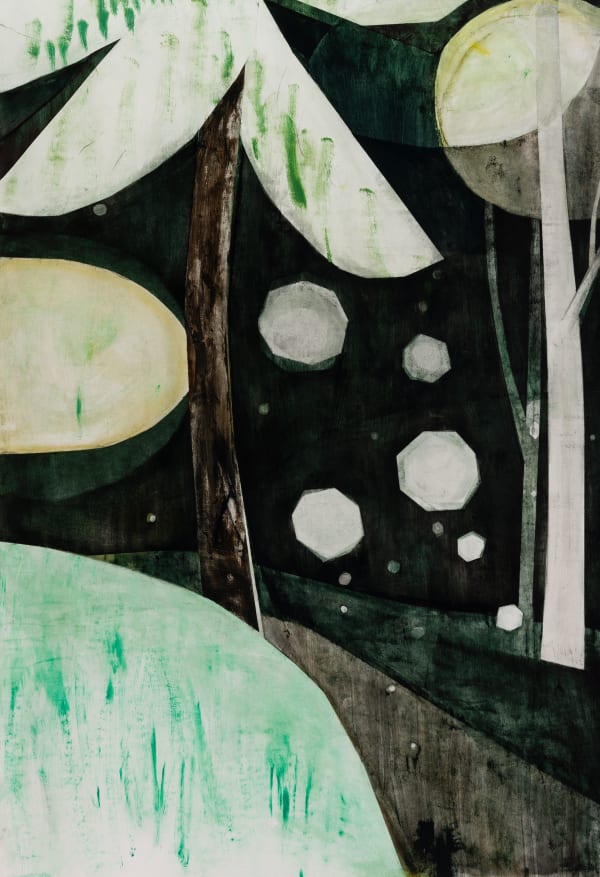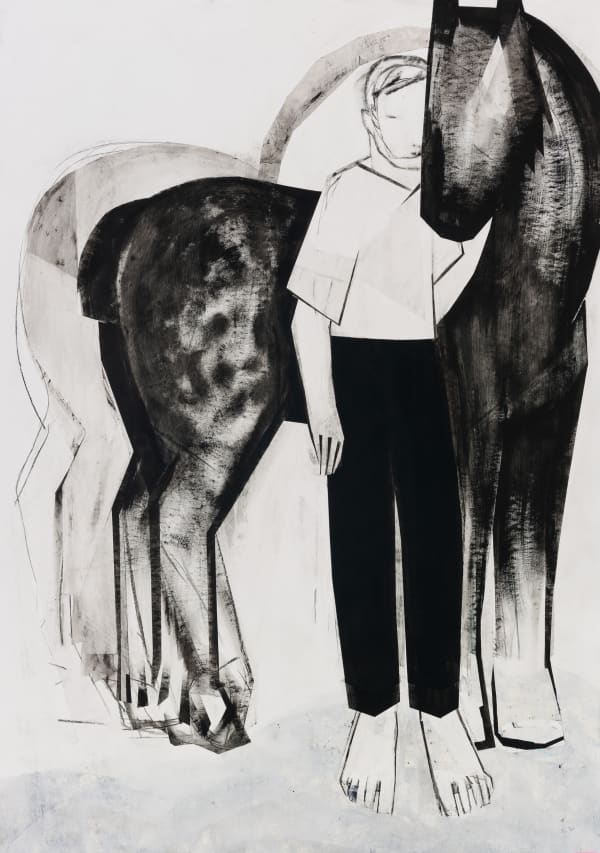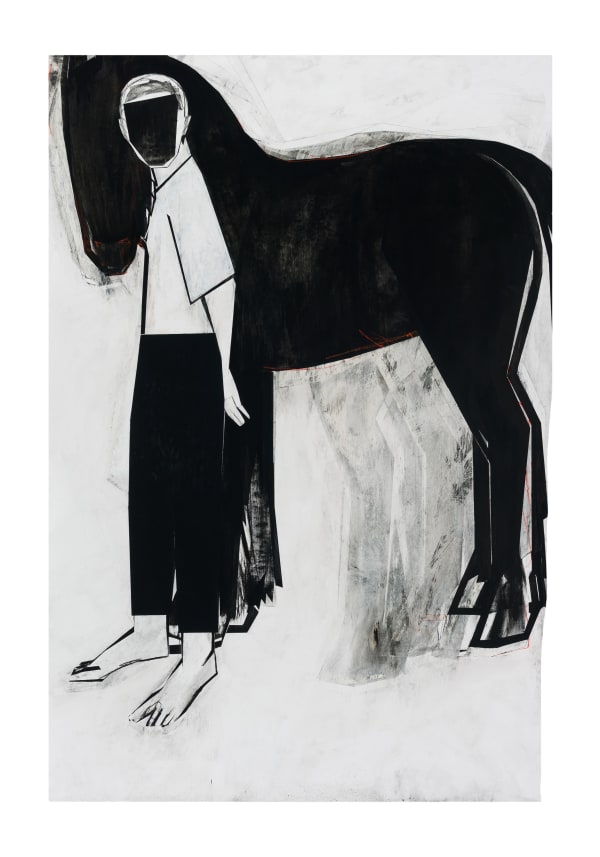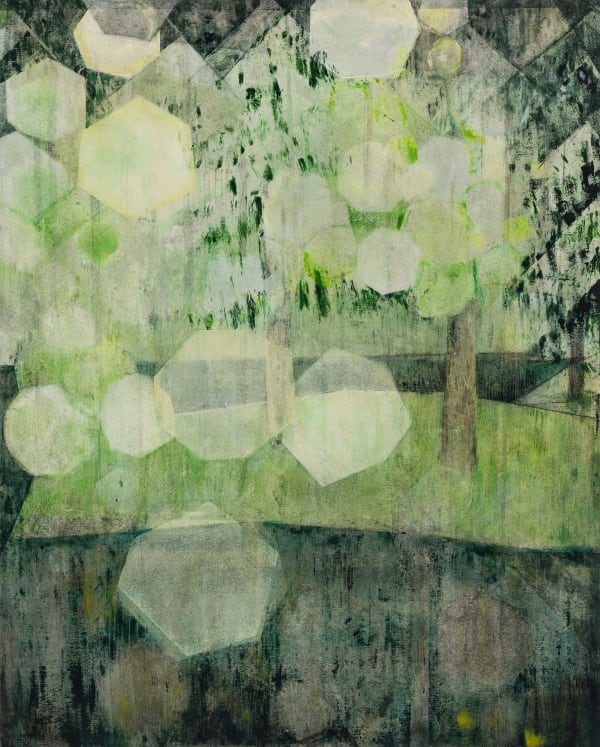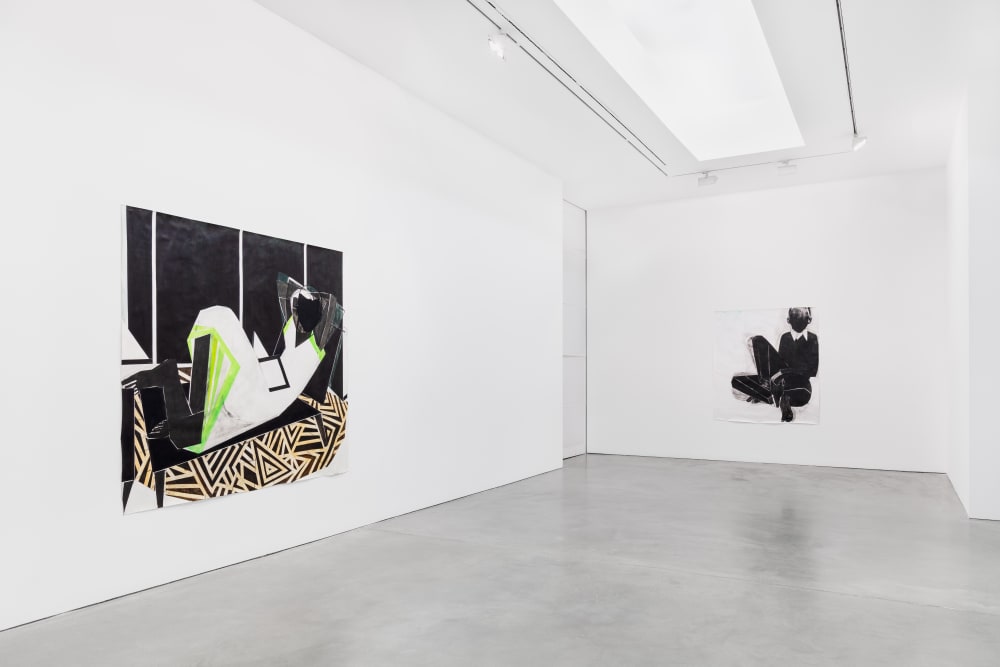Nightswimming: Iris Schomaker
-
介绍
Sometimes, images are like companions. They look at us, and we look back. They draw us into a dialogue, and a connection emerges—quiet yet unmistakable. And then, they take us on a journey with no predetermined path, no clear destination. They lead us into landscapes at once familiar and foreign. There is a quiet magic in this act of looking, in this encounter that demands nothing from us except the willingness to see—and in doing so, to be moved, to be carried back to ourselves.
The paintings line up one after another, their stories continue to unfold across them, touching at the edges of their appearance—forms and contours meet and merge. In this way, a connection emerges through a detour, as though between distant yet familiar relatives. The drawings interlock, weave connections, and sometimes form pairings. Thus, the swimmer enters the landscape. His figure is suspended, captured in motion, yet his presence extends beyond the boundaries of the painting. There is an echo in the landscape, which seems to respond to his movement. The figures in the paintings expand their realms of possibility through thought that dances—wandering as though in a dream. They make their stories their own and pass them on.
In Iris Schomaker’s images, it is a defining principle that the human and animal protagonists are immersed in their (bodily) posture, which defines them—they stand, swim, read, hold on to, and sometimes, they let go. It is this physical presence and the consistency of their actions that make their posture the fundamental condition of their existence. It is as if they do not exist beyond their actions captured in the picture. Their gestures and the posture they embody charge the pictorial space and hold it together. There is a concentrated silence in this posture, as if the background noise of civilization has been dimmed and momentarily suspended. Yet, the shifting contours of the figures subtly modulate the impression of movement, inscribed in the recurring patterns of temporally staggered perspectives. It is this ambivalence—the simultaneity of stillness, of holding still, in which the moment is preserved within the image, and of movement, which extends the essence of the moment—that leads to temporal overlays within the picture.
These temporal overlays continue in the formal decision to negotiate pictorial space on a flat surface, allowing the processes of negotiation to remain visible. The layers of paint, corrections, and the coexistence of possible contours resemble a geological cross-section of sediment—stored time made visible. The discarded line, the overpainted arm, the washed-out face—they all leave traces. These traces endure, remain present, and mark the meandering path toward the final composition. Thus, the image can be read as a topography, a map of a mental archive, and an attempt to give a coherent structure to the reservoir of captured moments—while still allowing them to exist as the material of dreams.
The animals in the images insist that dreaming is not an escape, but a way of perceiving. With quiet certainty, they claim the pictorial space, reminding us that perception is fluid, oscillating between what we call reality and the imaginary. Once one enters into a magical context, the animal stands at eye level. It does not merely exist within the image, but actively participates. It becomes an accomplice in the process of shaping, of appropriation and creation, by aligning itself with the rhythm of the visual world. When it enters the image, it is embraced, embedded in a deeper structure of meaning. Thus, the animal becomes a symbol of an attitude, a being—or rather: an entity. And form transforms into presence.
The possibility of an outline, a silhouette, giving an object a name. This is the attribution of an essence through its form—the recognition of being through the act of perception. And from this arises the possibility of an island, a world of its own that is at once part of a greater whole—a presence that insists on meaning, on form, on being. It is a thought that hides and reveals itself in the same movement. A fleeting glance may seem enough to understand what we see. But it is not. It is complicated. Rhizomatic. The seemingly obvious surface conceals more than it reveals. The moment we try to grasp it with certainty, it begins to dissolve. What appears whole is riddled with fractures. Between them lie patterns that reappear, repeat, and sometimes seem to leap between meaning and randomness.
The surface does not merely reflect—it conceals, distorts, seduces. What lies behind, beneath, or between its visible contours is layered, elusive, constantly in motion. In these hidden spaces, formations emerge—traces of thoughts, echoes. They cancel each other out and amplify one another at the same time, dissolving opposites while creating new ones. Repetitions appear, cycles of form return, like rhythms in a landscape. Memories that reassert themselves over time and detach, wavering between recognition and uncertainty. From the in-between, from the niches, possibilities arise—possibilities that, like holes in time in the fabric of reality, hold an image in place, keep it from vanishing. It remains—not just as something remembered, but as something that insists on existence, even when the moment has long passed.
It is the paintings that reveal themselves. They open up to contemplation and draw the gaze into silence, into the space behind the image. There, in a dialogue almost with itself, an outline remains—a lingering after-image that, in the moment of recognition, becomes a presence. All the images have always been there. Right here.
Text by Mareike Dittmer
-
安装图示
-
作品
-
Inquire about works by Iris Schomaker
-
参展艺术家




